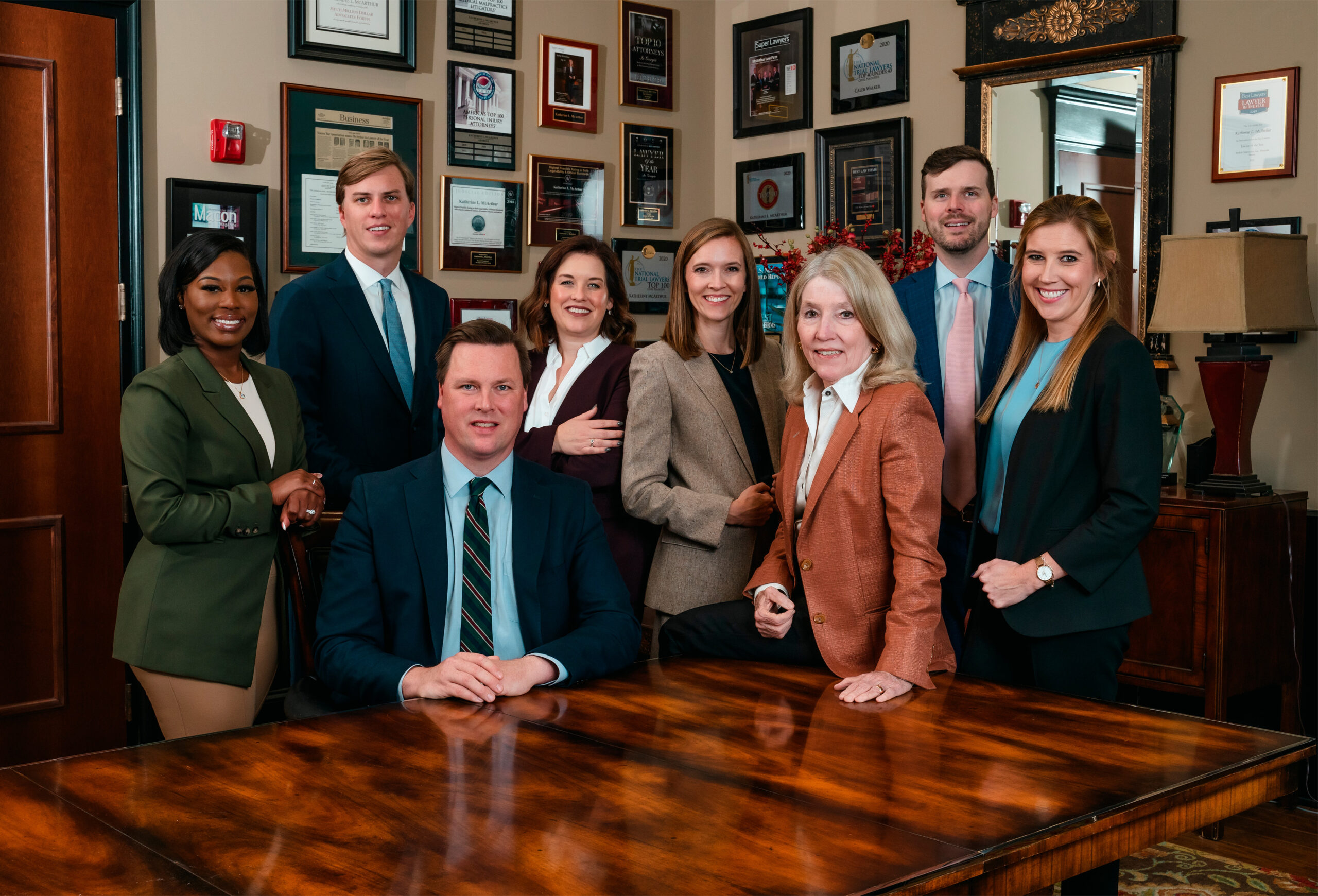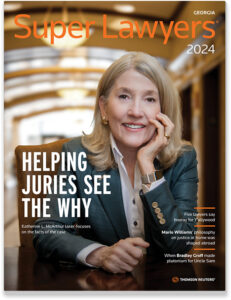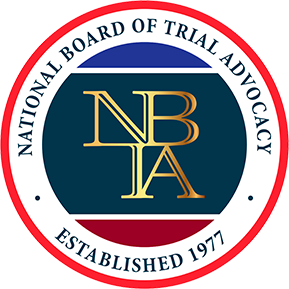Rear end collisions are among the most frequent types of motor vehicle accidents in Georgia, often occurring in congested traffic, at stoplights, or during sudden stops. While these accidents might initially seem minor, they can result in serious injuries such as whiplash, spinal damage, traumatic brain injuries, and other long-term complications. What seems to be mild back discomfort can ultimately resolve to be serious spine problems.
Georgia Rear End Collision Lawyer
McArthur Law Firm represents individuals who have been injured in rear end collisions throughout Georgia, including cities such as Atlanta, Macon, and Warner Robins. These cases can involve complex legal issues—especially when questions of liability, contributory negligence, or disputed insurance claims arise. The experienced car accident team at the McArthur Law Firm is ready and proud to represent victims of car accidents in settlement discussions and at trial if necessary.
McArthur Law Firm serves Fulton County, Bibb County and Fulton County, as well as Clayton County, Cherokee County, Forsyth County, and other counties in Georgia. For more information about the McArthur Law Firm or to set up a free consultation to learn what we may be able to do to help you with your personal injury case, give us a call at one of our offices in Georgia or fill out our online contact form.
- Atlanta Office: 404-565-1621
- Macon Office: 478-238-6600
- Warner Robins: 478-551-9901
Overview of Rear End Collision Cases
- Main Types Of Rear End Collisions In Georgia
- Common Injuries in Rear End Collisions
- Where Rear End Collisions Happen Most Often In Georgia
- Who Is Responsible In A Rear End Collision
- Frequently Asked Questions
- Additional Resources
Main Types Of Rear End Collisions In Georgia
Low-Speed Rear End Collisions
These collisions often occur in parking lots, drive-thru lanes, or congested city streets where vehicles frequently stop and start. Even at low speeds, the sudden impact can disrupt traffic flow, lead to unexpected vehicle damage, and create stressful situations for everyone involved. Drivers may not always realize the seriousness of these crashes at first, as visible damage is sometimes minimal despite underlying issues.
High-Speed Rear End Collisions
Typically taking place on major highways like I-75 or I-285, these incidents involve vehicles traveling at speeds exceeding 40-60 mph. When a driver fails to stop in time, the resulting impact is far more forceful, often causing extensive damage to the vehicles and significant disruption to traffic. These collisions can lead to multi-lane shutdowns, long delays, and extended investigations by law enforcement.
Chain Reaction or Multi-Car Rear End Collisions
In heavy traffic or hazardous weather, a single rear end collision can quickly escalate into a multi-vehicle pileup. The force from the initial impact transfers from one car to the next, causing widespread disruption and complicating cleanup efforts. These types of crashes often block multiple lanes, require coordinated emergency responses, and result in lengthy traffic delays.
Rear End Collisions Involving Commercial Vehicles
When trucks, vans, or other large commercial vehicles collide with smaller cars from behind, the effects can be particularly damaging due to the size and weight difference. These crashes often result in significant vehicle deformation, especially for the smaller car, and can require extensive repair or total replacement.
Rear End Collisions Involving Motorcycles or Bicycles
These incidents typically occur when a motorcyclist or bicyclist is struck from behind, often at intersections, stop signs, or along road shoulders. Because riders are more exposed, these crashes tend to be far more severe in outcome.
Common Injuries in Rear End Collisions
Whiplash and Neck Trauma
The rapid forward-and-back motion of the head causes whiplash, one of the most frequent injuries in rear-end crashes. It affects muscles, ligaments, and nerves in the neck and can lead to chronic pain, stiffness, and reduced range of motion.
Back and Spinal Injuries
The force of a rear-end collision can compress or twist the spine, causing herniated discs, vertebral fractures, or misalignment. In extreme cases, spinal cord injuries may result in paralysis or loss of motor function.
Traumatic Brain Injuries (TBI)
Even without direct head contact, the brain can be injured due to the sudden movement during a crash. Concussions and more severe forms of TBI may follow, with symptoms including confusion, dizziness, memory loss, and long-term cognitive issues.
Seatbelt and Airbag Injuries
While critical for safety, seatbelts and airbags can also cause injuries. Common issues include chest contusions, rib fractures, facial abrasions, and even burns due to the rapid deployment of airbags during impact.
Emotional and Psychological Trauma
Victims of rear-end collisions may suffer lasting emotional distress, including anxiety, depression, or post-traumatic stress disorder (PTSD). These conditions can persist long after physical injuries have healed and often require professional treatment.
Where Rear End Collisions Happen Most Often In Georgia
Rear-end collisions can happen anywhere, but certain places in Georgia are more likely to see these types of crashes. Busy roads, high-traffic intersections, and areas with frequent stops tend to have higher rates of rear-end accidents. In cities like Atlanta, Macon, and Warner Robins, some roads are known for regular backups, sudden stops, and impatient drivers—all of which raise the risk of a rear-end crash.
In Atlanta, major highways such as I-285, I-85, and the Downtown Connector (where I-75 and I-85 merge) are common hotspots. These roads are heavily congested during morning and evening rush hours. The stop-and-go traffic, along with distracted or speeding drivers, often leads to sudden braking and rear-end collisions. Many of these crashes happen in the middle of heavy traffic and involve multiple vehicles.
In Macon, I-475 and I-75 are key areas for rear-end collisions, especially where exits and entrance ramps create bottlenecks. Areas around Zebulon Road, Mercer University Drive, and Eisenhower Parkway are also trouble spots. School zones and construction zones throughout the city are especially dangerous, as cars may stop or slow unexpectedly.
Warner Robins sees a high number of rear-end crashes near major intersections like Watson Boulevard and Houston Lake Road. These areas have lots of commercial traffic, school traffic, and shopping centers. Drivers in these areas often stop suddenly to turn or yield, which leads to crashes when the vehicle behind isn’t paying attention or can’t stop in time.
Who Is Responsible In A Rear End Collision
The Rear Driver Is Often at Fault
The most common responsible party is the rear driver for negligence (O.C.G.A. § 51-1-6). If they were following too closely, distracted, or speeding, they likely violated O.C.G.A. § 40-6-49, which requires drivers to leave enough space to stop safely. Texting while driving, under Georgia’s Hands-Free Law (O.C.G.A. § 40-6-241), may also play a role in proving negligence.
Employer Liability for Work Vehicle Drivers
If the rear driver was operating a work vehicle at the time of the crash, their employer may also be held responsible under Georgia’s legal doctrine of respondeat superior (O.C.G.A. § 51-2-2). This applies when an employee causes a crash while doing their job duties. Employers may also be directly liable if they failed to properly train or supervise the driver.
Vehicle Manufacturer Liability
Vehicle manufacturers may be liable if the crash happened because of a mechanical failure, like defective brakes or faulty warning systems. In those cases, a product liability claim may apply under O.C.G.A. § 51-1-11. This type of claim requires expert analysis and usually involves reviewing design, manufacturing, and maintenance records.
Government Liability for Road Conditions
Sometimes, the condition of the road itself can play a role. If poor road design, missing signage, or lack of maintenance contributed to the crash, a city, county, or state agency could potentially be liable.
Frequently Asked Questions
How can someone determine if the crash was the other driver’s fault?
According to Georgia law (O.C.G.A. § 40-6-49), the rear driver is typically presumed to be at fault for following too closely. This legal presumption makes it easier to establish liability in many rear-end collision cases.
What if an injury didn’t appear immediately after the crash?
It is common for symptoms to develop hours or even days after an accident. Prompt medical attention and legal consultation are still recommended, even if pain or injuries appear later.
Can compensation still be awarded if the victim was partly at fault?
Yes. Under Georgia’s comparative fault rule (O.C.G.A. § 51-12-33), an injured party may still recover damages as long as they were less than 50% responsible for the crash.
What is the deadline for filing a personal injury claim in Georgia?
In most cases, victims have two years from the accident date to file a personal injury lawsuit, according to Georgia’s statute of limitations.
Is it necessary to speak with the other driver’s insurance company?
No. It is generally advised that all communication with the opposing insurance provider be handled by a qualified attorney to avoid jeopardizing the victim’s claim.
Will a court appearance be necessary?
Not necessarily. Many personal injury cases are resolved through settlement negotiations. However, a capable attorney should be prepared to take the case to trial if a fair resolution cannot be reached.
How is the value of an injury claim determined?
Compensation is based on several factors, including medical expenses, lost income, and the severity of pain and suffering. Each case is unique and must be evaluated on its individual merits.
What if the victim was not wearing a seatbelt?
Even if a seatbelt wasn’t worn, it may still be possible to recover damages. However, the defense may use this fact to argue for a reduction in the compensation awarded.
Is a police report required to pursue a claim?
While a police report is not mandatory, it can significantly strengthen a case by providing documentation of the incident and establishing key facts.
How long does the legal process typically take?
The duration varies. Some cases are settled in a matter of months, while others—particularly those that proceed to trial—may take a year or longer.
Additional Resources
Georgia Department of Driver Services – Traffic Laws & Safe Driving – This source from the Georgia Department of Driver Services outlines the rules and safety practices for driving in Georgia. It includes guidance on steering, night driving, speeding, space management, and tire maintenance. The page explains how rear-end collisions can occur due to tailgating and emphasizes maintaining a safe distance between vehicles to avoid crashes.
NHTSA – Analyses of Rear-End Crashes and Near-Crashes in the 100-Car Study – This report from the National Highway Traffic Safety Administration discusses findings from a study on rear-end collisions. It explores enhanced rear lighting systems like the Traffic Clearing Light (TCL) and alternating halogen lamps. It includes test results showing how these systems could help reduce the chances of rear-end crashes by improving driver response times.
NTSB – Addressing Deadly Rear-End Crashes – This safety alert from the National Transportation Safety Board addresses how forward collision avoidance systems can help prevent rear-end crashes. It summarizes crash data, highlights common causes like driver inattention, and encourages the use of crash warning and automatic braking systems in both personal and commercial vehicles.
National Library of Medicine – The Association Between Exposure to a Rear-End Collision and Future Health Complaints – This study explores long-term health outcomes for people involved in rear-end collisions, especially those with whiplash injuries. It follows participants for seven years and compares their health complaints to those not involved in crashes. The findings show increased risks for symptoms like headaches, fatigue, and sleep problems among those who experienced whiplash.
Hire a Lawyer for Rear End Collisions in Fulton County, Georgia
McArthur Law Firm serves the cities of Atlanta in Fulton County, Macon in Bibb County, Kathleen in Houston County, Peachtree Corners and Lawrenceville in Gwinnett County, Marietta and Smyrna in Cobb County, Stonecrest, Brookhaven and Dunwoody in Dekalb County, Albany in Dougherty County, Columbus in Muscogee County and throughout surrounding areas of the state of Georgia.
Contact one of our offices at the following numbers or fill out an online contact form to start building your case.
- Atlanta Office: 404-565-1621
- Macon Office: 478-238-6600
- Warner Robins: 478-551-9901







